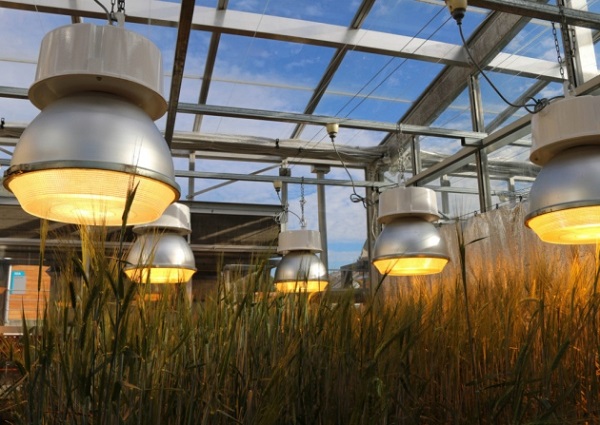A group of scientists found a method to grow wheat twice as fast as the speed using standard approaches. This method can help feed the rapidly-growing population worldwide.
 |
|
(Image: University of Queensland) |
According to the research team's director, Dr. Brande Wulff, a crop grows from a seed to harvest typically requires 4 to 5 months. In comparison, when the team uses specialized LED lamps to cultivate the crops, it only takes 8 weeks for a full wheat generation cycle to complete. In the John Innes Centre for plant research locating in Norwich, UK, the researchers use LED lamps to offer light to the plants for 22 hours per day and provide rich hydroponics nutrient solution to the plants. Even that was the case, they were able to use less energy than standard laboratory's growing technology.
Dr. Wulff said the world urgently needs to develop crops that can adapt future climate better. Humans have to race against time to develop better crops. These new seeds will be more affordable, more nutritious, and more productive, so as to feed the growing population globally.
Dr. Wulff expressed, these crops grow better and healthier than crops that grow under standard growth conditions. The research team mainly uses LED lights that can emit blue and red light that plants needs for photosynthesis. By contrast, the majority of labs and greenhouses use sodium vapor lamps, which are similar to street lights.
Dr. Wulff pointed out, most of yellow and green light that sodium vapor lamps emit does not facilitate the plants to grow while LED lamps can provide the exact light that plants' photosynthesis needs.
However, it will not be realistic for large farms to intensively use LED lights at night time for long term crop growth. The "Speeding breeding" technique of the team might not be able to apply to large-sized farms.
However, Dr. Wulff explained, the research result is likely to accelerate the development progress of crop growth. In this way, it is easier to develop crops that are more resilient to harsh environments, provide more nutrients, yet need less chemical fertilizers.
Besides, the research team can grow six generations of barley, pea, and chickpea within one year.












